Hearing Session Of Iranian Dissident Rapper Held In Esfahan

The court session of Iranian rapper Toomaj Salehi, arrested for support of the nationwide uprising, was held in Esfahan (Isfahan) on Sunday.

The court session of Iranian rapper Toomaj Salehi, arrested for support of the nationwide uprising, was held in Esfahan (Isfahan) on Sunday.
The 33-year-old rapper, violently arrested in late October, faces the death penalty for charges of 'corruption on earth'.
Toomaj salehi’s lawyer, Amir Raisian, said the court session was held behind closed doors and that the verdict will be announced within one week, explaining that he objected to six issues in Toomaj’s case, but the court only accepted one.
The rapper - an artist mostly known for his protest songs about Iran's social issues and injustice by the government - is accused of dissemination of lies through publishing tweets which is considered as an example of corruption of earth, a loose regime term to suppress opposition.
His interview with Canada’s CBC in which he called the regime a mafia "ready to kill the entire nation ... in order to keep its power, money and weapons", is also considered “cooperation with a hostile state”, as Canada is seen by Isfahan court as a hostile government.
His other charges are insulting the founder of Islamic Revolution Ruhollah Khomeini and Supreme Leader Ali Khamenei.
Raisian also stated that the court gave him only half an hour of time to defend his client who has been in prison in the last eight months.
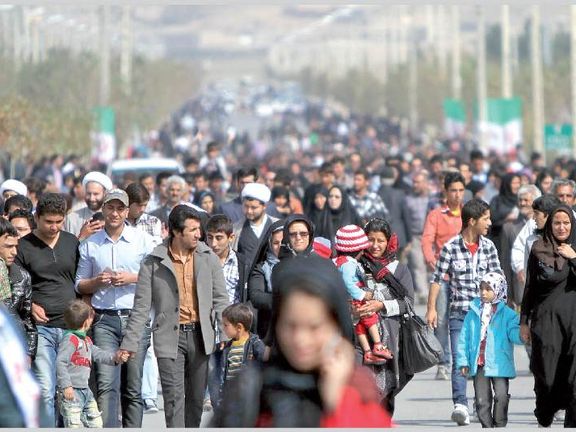
An Iranian sociologist who was an adviser to reformist President Mohammad Khatami (1997-2005), says Iranians perceive the current power structure as an alien entity.
"When the government is perceived as a stranger, the society cannot tolerate its shortcomings." Hossein Valeh said in an interview with Roiuydad24 on Saturday. The government has lost trust because of its aversion to being inclusive, he added.
What is worse is that "The regime has widened the gap between itself and the nation instead of trying to fill it." It has become less attentive to popular demands.
Pervasive political instability in Iran began in 2017, when after years of deteriorating relations with the West and international sanctions, the economy became stagnant. Anti-regime protests that started in December of that year in fact never stopped and in September 2022 millions of disenchanted people came out into the streets nationwide, posing the most serious challenge to the clerical regime in four decades.
Valeh, a former diplomat and a current assistant professor at the Department of Philosophy of the Shahid Beheshti University in Tehran, also told Rouiydad24: "Generally, when there is a divide between the government and the nation, the country becomes polarized."
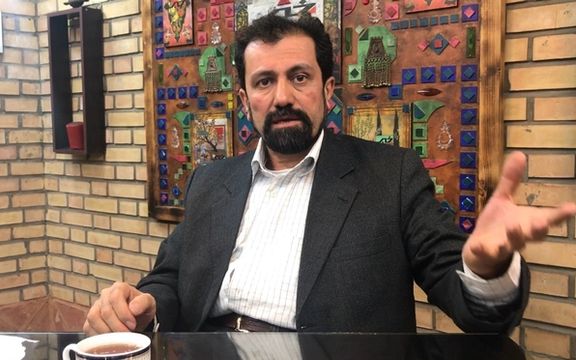
"In such a situation, no one hears the voice of truth and instead, everyone will listen to those who reduce the other side to the level of an enemy," Valeh said, adding that each side perceives any positive news about itself as a fact and any negative statement as a lie without bothering to establish the truth."
The sociologist maintained: "The gap between the government and the nation is currently deep and wide. As a result, we tend to believe any fake news which supports our point of view or rules out the other side's opinion." He added: Maciavelli has taken over our collective unconscious."
Under these circumstances expectations from the government will rise. The people will minimize its achievements and maximize its shortcomings in their perceptions.
He explained that there are accumulated divides in Iran based on religious versus non- religious, traditional versus modern and liberal versus despotic dichotomies. Valeh added that since the 18th century, this accumulated dichotomies have been the driving force of political developments while also creating social conflicts.
The people's distrust of the government will increase the cost of governance and make progress difficult. It will eventually erode the government's legitimacy altogether. Meanwhile, in the absence of public trust, the government cannot make up for its inefficiency.
Particularly dangerous is the divide between the very young generation and the aging clerics supported by the Revolutionary Guard who try to keep the society within the bounds of their isolationist religious ideology.
Along the same line, highlighting the divide between the state and the nation, former government spokesman Ali Rabiei wrote in Etemad Online that it appears there is a tendency in the government to oppose people's happiness. "Regrettably the government has forgotten the events that took place during the protests in the fall of 2022, and that is dangerous.
He pointed out that the government tends to ignore all the explanations and reasons that have been highlighted for last year's events, and it does not understand the people's concerns about the present and the future. The result, he said, is an unhappy and frustrated society.
Rabiei added: "The political depression reveals itself as lack of interest in political participation within the system and a tendency to protest."

The government is threatening families of protesters who were killed in the Iranian uprising not to hold birthday ceremonies at their loved ones’ graves.
The past few days marked the birthdays of several of the most iconic protesters who were either shot dead by security forces, such as Mahdis Hosseini and Peyman Manbari, executed on trumped up charges such as Saeed Yaqoubi, or beaten to death such as 16-year-old Sarina Esmailzadeh whom so many have come to cherish.
Iranian social media is full of posts that share a common structure, all mentioning the name of a dead protester and what their age would be if they were alive on their birthdays.
While Iranians on social media are paying tribute to them as “the young and enlightened generation of Iran,” the authorities have put pressure on their families to prevent gatherings for their birthdays fearing larger antiregime events.

Sarina Esmailzadeh died on the way to hospital after being severely beaten in the head with batons during the early days of nationwide protests following the death in custody of 22-year-old Mahsa Amini. She had joined a protest in Karaj, a large city half an hour from the capital Tehran, on September 21. Regime officials claim she jumped from a neighbor’s rooftop and killed herself. They insist her death was unrelated to protests, but the nature of her injury and death was verified by Amnesty International.
The 16-year-old YouTuber, whose funeral ceremony and the 40th day after her death turned into large demonstrations, was among the first martyrs of the Iranian uprising and would have become 17 today if the Islamic Republic was not in power in Iran. Her name is now a trendy hashtag on twitter with tens of thousands of people talking about her or her video blogs on her birthday.
Sarina, who sang Hozier’s 2013 hit song on a family road trip to the historic city of Kashan in her first vlog on YouTube titled ”My First Vlog!”, has a trove of posts about Iranian teens and the problems people face in the society.
"Iranian teenagers are no longer the teenager of 20 years ago. They are aware of the situation in the world and ask themselves what they should have less than American teenagers," she said in of her whimsical yet witty videos after pointing out that the people in Iran only expect welfare and prosperity.
Former political prisoner Hossein Ronaghi said all the Iranian nation seeks justice for Sarina, calling on people to honor her and keep her memory alive however they can.
Mahdis Hosseini, another teenager would have also turned 17 on Friday if she was not injured by bullets during a protest in the northern city of Amol on September 21. She went into hiding for a couple of weeks without receiving hospital care, for fear of not being arrested. Two days after she returned home, she was left alone for several hours, and when her mother returned, she found her dead body.

Peyman Manbari, who would have turned 26 on Saturday, was killed during a rally in the Kurdish-majority city of Sanandaj in October. His family and friends had planned to gather at his grave but had to cancel under threats and pressure by Iran’s intelligence agencies.
Agents contacted the Manbari family and “told them that they don't even have the right to have a birthday for him in their own home," said Fatemeh Heydari, who lost her brother Javad in a crackdown on a protest rally in the city of Qazvin. “How many young lives, how many grieving families, how much endless sufferings are enough to satisfy your criminal nature so that you stop taking the lives of our loved ones?” she asked.

If not executed, Saeed Yaghoubi's 38th birthday was also on Saturday. Saeed was hanged along with Saleh Mirhashemi and Majid Kazemi in May after they were convicted over the death of two IRGC Basij militia members and a police officer in protests in November.
Human rights campaigners say they were tortured into confessions, and there was no reliable evidence against them.
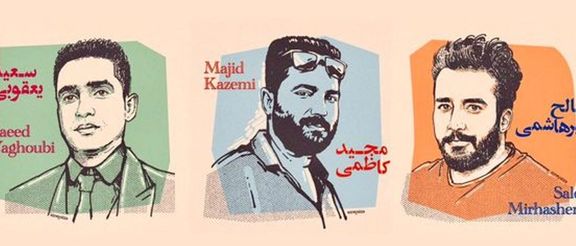
Leaked audio from police radio chatter from the night the three regime agents were killed indicates that they were shot by friendly fire of plainclothes forces. The victims had alibis, with the family of one of the victims saying there is CCTV video footage of their son at work.
According to the cousin of one the executed protesters, "the family of Saeed Yaghoubi (Yaqoubi) was not allowed to be near his grave on his birthday."
Iran’s exiled prince Reza Pahlavi also tweeted in their honor, decrying “Khamenei’s child and youth-killing regime.” “The memories of these brave children of Iran are eternal," he added.
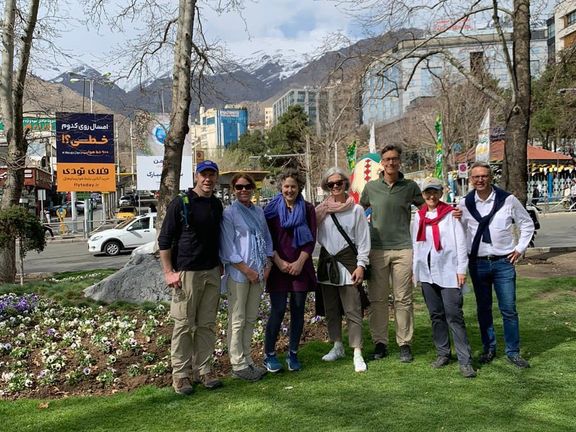
Iran’s IRGC-affiliated Fars news agency slammed the outings of ambassadors and their families in public without mandatory hijab.
The hardline website on Sunday demanded that the Ministry of Foreign Affairs deal with the diplomats who do not obey the Islamic dress code.
Fars published photos of three tourists in a car with diplomatic license plates in Khorramabad, western Iran, saying these people included a man wearing short pants and two women without headscarves.
“Removing hijab by the ambassadors and their wives is not unprecedented. For example, during Nowruz this year, the envoys of the United Kingdom, the Netherlands and Denmark broke the laws of our country by walking with their wives who were not covered with veils on Valiasr Street in Tehran and then published the pictures on social media,” added Fars.
Frank Molen, the Netherland’s Ambassador to Tehran, published some photos of his excursion in the Iranian capital along with some colleagues in March.
Fars called such moves "mischievous" behavior that are "in non-conformity with diplomatic rules" claiming that they are supporting the “riots” in Iran.
Fars also launched a petition asking its audience to sign to put pressure on the foreign ministry to deal with the issue.
Four decades after the Islamic Republic made hijab mandatory, women are increasingly appearing in public in regular clothing such as colorful dresses and with no headscarf covering their hair.
Since the death of the 22-year-old Mahsa Amini in the custody of morality police and the protests that engulfed the country for months many women have discarded their headscarves altogether and vowed never to wear it again.

Iran’s religious intellectuals or modernists have expressed support for a top Sunni cleric who has come under pressure from the government for his fiery sermons.
“We believe that given the absence of liberalism and courage among Shia clerics, [the Sunni] Mowlavi Abdolhamid must receive all-encompassing support from Iranians in Iran and abroad,” a statement released Saturday by fifteen prominent political, academic and media figures said.
Security forces during the week arrested several people close to Mowlavi Abdolhamid, the outspoken leader of the Sunnis in Sistan-Baluchestan, including his grandson. The regime has been pressuring him to put an end to criticism of the government in his very popular Friday sermons in Zahedan, the capital of the southeastern province.
Abdolhamid’s sermons which make headlines almost every Friday have been followed by anti-government protests since what has come to be known as the Bloody Friday of Zahedan.

On September 30, 2022, security forces opened fire on civilian anti-government protesters killing more than 93 protesters including children and onlookers in Zahedan after Friday prayers.
This week’s Friday prayers in Zahedan were for the first time since then led by Mowlavi Abdul Ghani Badri, the interim Friday imam of Zahedan. Abdolhamid who had delivered a sermon the previous day for the Muslim holiday of Eid al-Adha, asked worshippers to march silently instead of the usual protests and chanting.
The religious intellectuals praised Sunni clerics who, particularly in the predominantly Sunni provinces of Kordestan and Sistan-Baluchestan, who have turned into “symbols of resistance and endurance of the Mahsa Movement.”

Signatories of the statement underlined that in addition to democracy and social justice, establishment of a government in Iran in which religion and state are separate is necessary. The intellectuals included philosopher and theoretician Soroush Dabbagh (Abdolkarim Soroush), female Islamic scholar Sedigheh Vasmaghi, former cleric Hassan Yousefi Eshkevari, historian Hashem Aghajari, Muslim scholar Mohammad Javad Akbarin, and commentator and journalist Reza Alijani.
Speaking to Iran International TV, Turkey-based political science researcher Meysam Badamchi who is among the signatories of the statement said Abdolhamid is now speaking not only about the wishes and demands of Sunnis but also those of other Iranians when he criticizes the government.
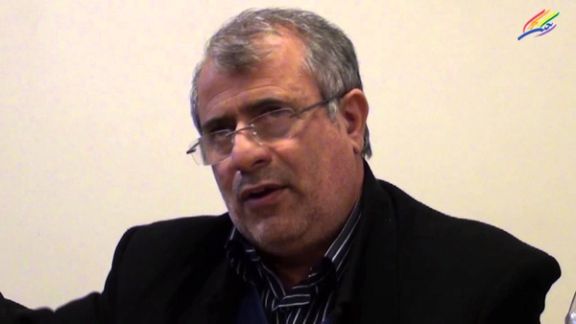
The signatories – who come from a Shia background themselves -- wanted to defend the rights of Mowlavi Abdolhamid as a Sunni cleric and the right of the people of Iran to criticize the government at a time when the Shia clerical establishment has chosen to remain silent about violation of people’s rights, he said.
“Religious Intellectual” refers to a number of political groups and public figures who believe in separation of religion and state and respect freedom of choice. Unlike theoreticians of the Islamic Republic, they consider religion a personal matter rather than the source of laws that regulate politics, economy and society.
They do not believe in the rule of Islamic jurist (Velayat-e Faghih (Wilayat al-Faqih) or Supreme Leader) which gives a cleric such as Ali Khamenei extraordinary powers including the power to overrule all elected bodies and officials and hence, people’s choice.
As a system of governance, Velayat-e Faqih has underpinned the way the Iranian regime has operated since the country’s 1979 Islamic Revolution. At its most basic, the theory, advocated by some Shia thinkers, justifies the rule of the clergy over the state.
Religious intellectuals have usually joined forces with reformists to create alliances against conservatives and hardliners (often collectively referred to as Principlists) at the times of elections.
Religious intellectualism has a long history in Iran and the Islamic Republic. Philosophers and theologists such as Abdolkarim Soroush, Mohsen Kadivar, Mohammad Mojtahed-Shabestari and politicians such as Mehdi Bazargan, the first prime minister of the Islamic Republic, have defined the tenants of religious intellectualism over the past few decades.
The non-religious opposition generally looks at religious modernists with caution, given their desire to completely severe ties between politics and religion.

Iranian hardliners and some clerics continue demanding enforcement of hijab and issuing threats against celebrities and those who demand a more liberal lifestyle.
Repeating Supreme Leader Ali Khamenei’s decree that being unveiled is “both politically and religiously haram”, Ahmad Khatami, the ultra-hardliner Friday imam of Tehran, told a congregation gathering for special Eid ul-Adha prayers that those who are unveiled aim to weaken the pillars of family life and destroy peace of mind in the society.
“I’m telling those who are unveiled that their defiance of hijab will never become a norm, because it was, is and will be against norms,” Khatami said, complaining that some unveiled women on social media “attack those who wear it”.
“Discarding hijab is haram based on Sharia and also politically,” Khamenei declared in a speech in April. His declaration was a clear signal to officials and his loyalists to do anything it takes to re-establish control over women.
But in the past few months the regime has been struggling to enforce the hijab as successfully as it used to in previous years. Less force is being used in the streets against women due to the fear of igniting another round of anti-government protests.

“It is unbearable that those who wear the hijab and their children are assaulted in the Islamic Republic,” Khatami said and urged the authorities to take legal action. “You, authorities who are in charge, [be aware] that assault on women who wear the hijab is a crime. What and who are you waiting for? [Are you waiting for them] to commit a crime and then apologize and say they are sorry for overreacting?”
It is not clear what the firebrand cleric was referring to. There have been no attacks against women for wearing the hijab. There have been argument and scuffles in the streets when religious women on government payrollhave stopped other women to scold them for ‘improper hijab.’
Other clerics and hardliners have also been making similar allegations against unveiled women whose number has been on the rise to the extent that being unveiled is becoming “the new norm” in some Iranian cities.
Pro-hijab enforcement rally outside the Iranian parliament June 27
A video circulating on social media of a pro-hijab rally in front of the parliament June 27, shows a cleric who demands stricter enforcement of hijab rules calling the anti-compulsory hijab women “promiscuous”. The cleric claims that unveiled women are only “a minority of two to three percent [of all women] who present themselves as the majority”.
“And how many participated in this rally? Maximum 30 people. No need for further explanation,” dissident journalist Ehsan Bodaghi in Tehran tweeted about the cleric’s claim.
Authorities have been making various threats against those who defy the hijab rules since mid-March when protests that had engulfed the country for over six months became less frequent.
Iran's Police Chief Ahmad Radan in June threatened government offices that do not deny services to unveiled women with repercussions as part of hijab enforcement. Authorities have also been putting pressure on businesses including cab companies to make them enforce such rules by denying services to unveiled women.
Earlier this month students at University of Art in Tehran who had staged a sit-in protesting draconian hijab laws were assaulted by a security official of the university and several students were reportedly badly injured.
The regime has also tried to tighten its control over entertainment content in line with its policy of enforcing religious restrictions on the population and warned filmmakers not to hire actresses who have been supporting the anti-compulsory hijab movement by unveiling in public or publishing unveiled photos on social media.